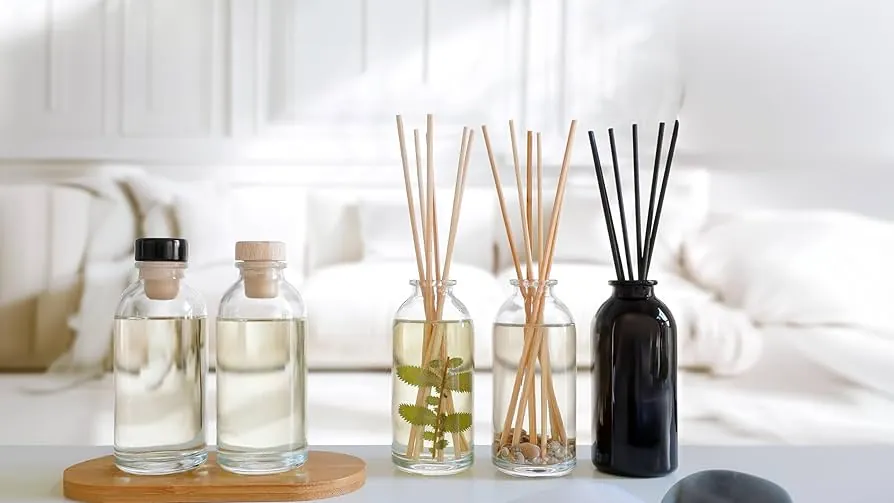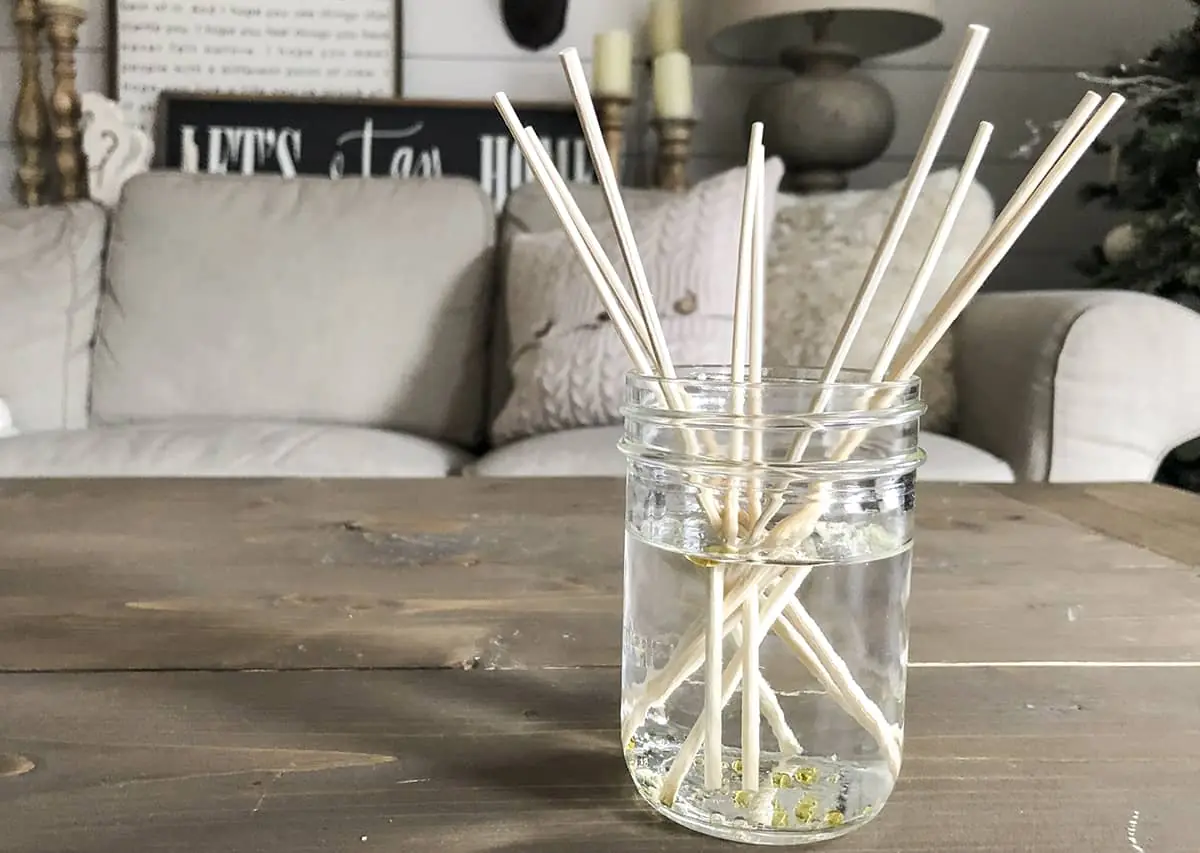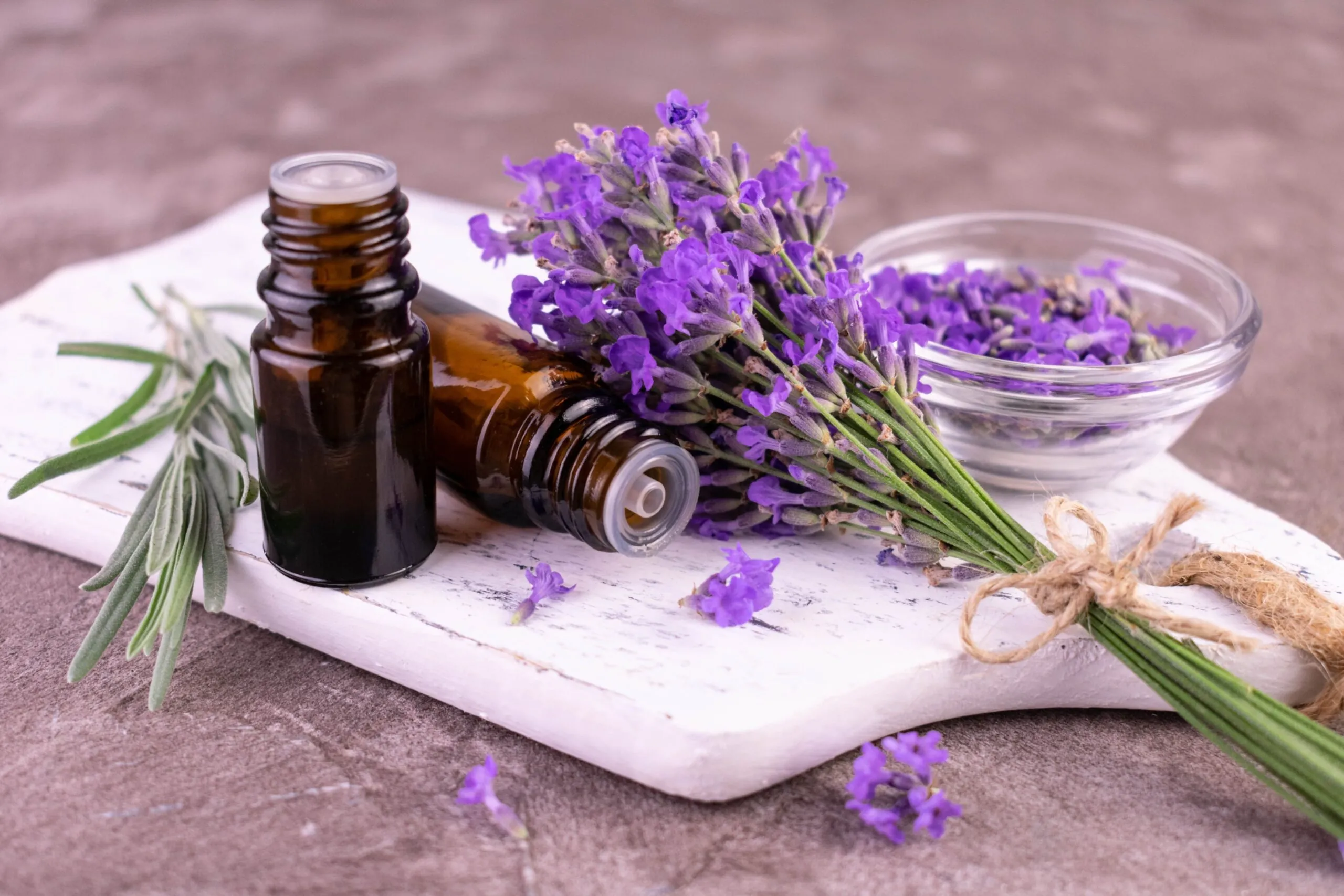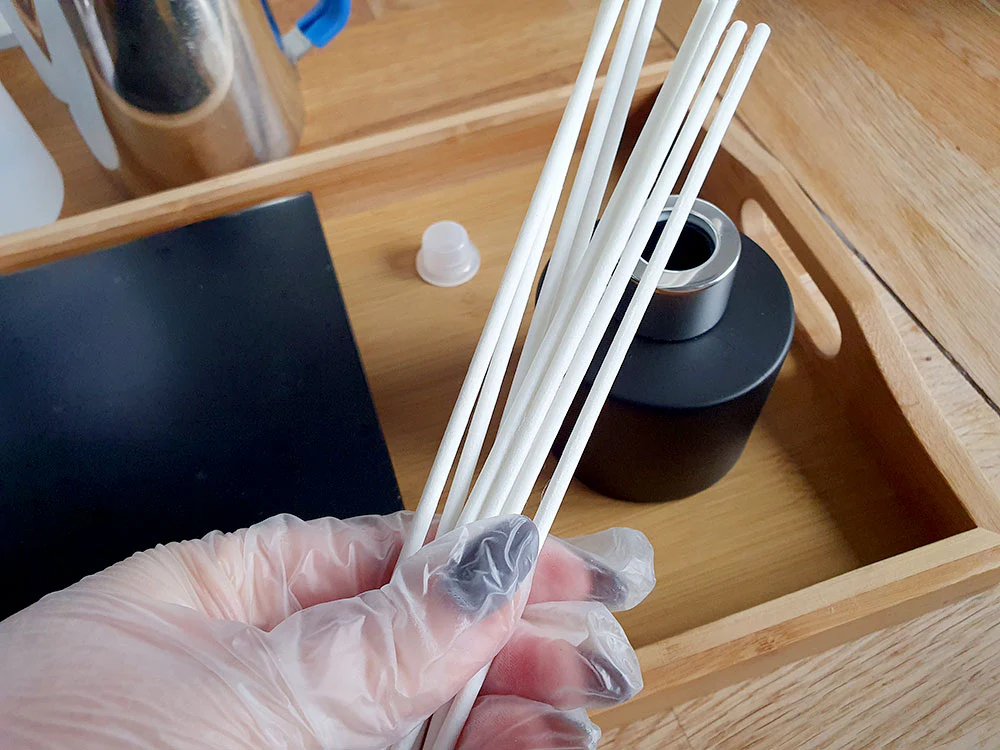Are you curious about how to use diffuser sticks with essential oils to naturally fragrance your living space or empower your wellness routine? Reed diffusers and similar stick-based systems are one of the simplest, safest, and most stylish ways to enjoy continuous aromatherapy at home or work, without any need for flames or electricity. In this guide, you’ll discover step-by-step instructions, expert tips, and answers to your most common questions—whether you’re a complete beginner or looking to optimize your fragrant setup.
What Are Diffuser Sticks and How Do They Work?
The Basics of Diffuser Sticks
Diffuser sticks—commonly called reed diffuser sticks—are thin, porous stems (typically rattan or bamboo) designed to soak up and disperse essential oils throughout the air. The sticks draw up the scented liquid from a reservoir via capillary action, then gently release natural fragrance into your space.
Why Use Essential Oils with Diffuser Sticks?
Pairing sticks with essential oils instead of synthetic fragrances means you’re not only treating your nose to delightful, plant-powered scents, but you can benefit from the broader positive effects of essential oils—like stress relief, better sleep, and even improved focus. Essential oil diffusers are also a flame-free, plug-free alternative to candles, wax melts, or plug-in air fresheners.
Step-by-Step: How to Use Diffuser Sticks with Essential Oils
Ready to get started? Here’s your detailed, actionable walkthrough for how to use diffuser sticks with essential oils in any room.
What You’ll Need
- A clean glass or ceramic diffuser bottle (with narrow neck)
- Quality natural reeds or bamboo sticks
- Your favorite essential oils (single or blended)
- Carrier oil (such as sweet almond or fractionated coconut), or a premade diffuser base
- Small funnel (optional, but helpful)
How to Set Up Your Essential Oil Diffuser Sticks
- Prepare the Diffuser Base: If using pure essential oils, always dilute with a carrier oil—never use undiluted, as pure oils evaporate quickly and can clog reeds. Mix roughly 20–30% essential oils with 70–80% carrier oil, or follow the instructions on your chosen commercial base.
- Pour Mixture into Bottle: Use a funnel to pour the blend into your diffuser bottle, filling it halfway to two-thirds full.
- Insert the Sticks: Place 5–8 reeds into the narrow neck of the bottle. Spread them out for even scent distribution.
- Allow Wicking: Let the reeds soak up the oils for about one hour, then flip them so the saturated end is exposed to the air.
- Regular Flipping: Every few days, flip all the reeds to refresh the fragrance and keep scent levels optimal.
- Refill or Replace: When the liquid is gone or scent fades, dispose of old oil, wash the container, and begin anew.
Quick Reference: Diffuser Stick Setup
| Step | Best Practice |
|---|---|
| Essential oil ratio | 20–30% essential oil, 70–80% carrier or diffuser base |
| Sticks per bottle | 5–8 (add more for larger rooms) |
| Flipping frequency | Every 3–5 days for strong consistent scent |
| Bottle placement | Away from direct sunlight and drafts |
Choosing the Best Essential Oils for Diffuser Sticks
Scent Families and Their Effects
- Calming: Lavender, chamomile, sandalwood—ideal for bedrooms and relaxation corners.
- Uplifting: Orange, lemon, grapefruit, peppermint—great for kitchens, living rooms, or office spaces.
- Purifying: Eucalyptus, tea tree, rosemary—help clean air and support breathing, especially in bathrooms or entryways.
Blend oils to create your own signature atmosphere or rotate them with the seasons to keep things fresh.
Tips for Optimal Results
- Use high-quality, pure essential oils—not synthetic fragrance oils—for both safety and full aromatherapy benefits.
- Start with lighter scents in small rooms and bolder oils in larger or open-plan areas.
How to Use Diffuser Sticks with Essential Oils for Long-Lasting Performance

Get the Most from Your Reed Diffuser
- Flip with Care: Flipping reeds too often can shorten the lifespan of your oil, but not flipping leads to faded fragrance.
- Room Placement: Position your diffuser where airflow is moderate—not by open windows or in direct sunlight, which speeds evaporation.
- Control Scent Strength: Add or remove sticks as needed. More sticks = stronger scent; fewer sticks = lighter fragrance.
- Freshen Regularly: Every few weeks, replace reeds completely—they can become saturated or clogged over time.
Troubleshooting Common Issues
- No Scent? Try flipping the reeds, moving the diffuser to a higher-traffic area, or replacing with fresh sticks.
- Too Strong? Remove a few reeds, move your diffuser to a larger space, or dilute the essential oil blend.
- Cloudy or Discolored Liquid? Replace both oil and sticks to prevent mold or buildup.
Practical Examples: Using Diffuser Sticks with Essential Oils in Real Life
Scenario 1: Creating a Relaxing Home Office
Set up a diffuser with lavender and bergamot oils to encourage calm focus during work hours. Use 6 reeds and flip them every Friday afternoon to refresh the scent for a new week.
Scenario 2: Welcoming Entryway
Mix a blend of lemon and rosemary oils for a crisp, inviting first impression. Place the diffuser near your doorway (away from sun) and flip the reeds every 3–5 days.
Scenario 3: Improved Sleep Routine
In your bedroom, use sandalwood and chamomile for gentle, sleep-promoting aromatherapy. Limit to 5 reeds for a subtle effect and flip before your bedtime routine.
Safety Tips When Using Diffuser Sticks and Essential Oils
- Keep out of reach of children and pets. Some oils can be toxic if ingested or spilled.
- Avoid direct skin contact with the essential oil mixture—wear gloves if you have sensitive skin.
- Clean spills promptly with soapy water to avoid staining surfaces.
- Do not light diffuser sticks—they are not designed to be used as incense or candles.
Advanced Science: How Diffuser Sticks Disperse Essential Oils
Understanding Capillary Action and Scent Distribution
The effectiveness of diffuser sticks with essential oils relies on the physics of capillary action. Capillary action occurs when the adhesive force between the liquid (oil mixture) and the walls of the reed stick is stronger than the cohesive forces between oil molecules. This draws the oil upwards, where it begins to evaporate, slowly releasing the aroma.
Key Points:
- Stick Material Matters: Natural rattan is preferred for its many micro-channels, which promote even, steady absorption. Bamboo may look appealing but often has blocked canals, making it less efficient.
- Oil Viscosity: Thicker oils travel more slowly up the sticks. If using heavier essential oils (like sandalwood or patchouli), consider a higher dilution with a lighter carrier or specialized diffuser base.
Evaporation and Room Environment
- Room Humidity: Higher humidity helps disperse scent more broadly, while dry or air-conditioned rooms may cause oils to evaporate faster but smell weaker.
- Air Circulation: Strategic airflow (not direct drafts) helps carry fragrance but extreme movement (fans, AC vents) can cause scent to dissipate too quickly.
Creative Customization: Personalizing Your Diffuser Stick Experience

DIY Reed Colors and Shapes
Reed diffuser sticks are available in different materials and styles:
- Colored Reeds: Match your decor by using colored or painted rattan sticks. Food-safe coloring or natural dyes provide eye-catching flair (avoid paint that clogs capillaries).
- Decorative Ends: Affix beads, feathers, or small charms to the reed tops for whimsical or seasonal looks. Just be careful not to overburden stems so they don’t tip.
Custom Bottle Selection
- Upcycling: Repurpose glass bottles from beverages or condiments. Narrow-neck vessels minimize evaporation and keep scent focused for longer.
- Presentation: For gifts or display, add ribbons, labels, or dried botanicals around the bottle neck.
Deep Troubleshooting and Scent Longevity Tips
Common Problems and Tailored Solutions
Scent Fades Too Fast:
- Reduce the number of reeds.
- Move diffuser out of direct sunlight or away from heat sources.
- Use a thicker carrier oil (like safflower or mineral oil).
Oil Remains in Bottle, Sticks Seem Dry:
- Sticks could be clogged; replace with new, fresh reeds.
- Try thinning your oil blend with more carrier or a splash of high-proof alcohol for better wicking (no more than 10%).
Oil Smells “Off” or Musty:
- Clean the bottle thoroughly before each refill. Old oils can become rancid.
- Avoid using vegetable oils that oxidize quickly (like olive oil). Instead, use fractionated coconut or mineral oil for better shelf life.
Extending Scent Life
- Rotate different blends seasonally to keep your nose attuned and avoid “scent fatigue.”
- Store unused reeds and oils in airtight bags away from light and heat.
Creative Uses Beyond Room Scenting
Use in Closets and Drawers
Place a mini diffuser in walk-in closets or dresser drawers using a tiny bottle and only 2–3 reeds. Freshen fabric and naturally repel mustiness.
Car Diffusers
Use a small, spill-proof bottle with 1–2 sticks in a cupholder for a gentle, chemical-free car scent (avoid during extreme heat).
Spa and Events Ambiance
Set up multiple diffusers in large bathrooms, at wedding venues, or spas. Choose blends designed for calm, energy, or celebration.
Scent Blending for Specific Moods and Purposes

For Relaxation and Sleep
- Recipe: 12 drops lavender, 6 drops cedarwood, 8 drops orange, blended in 50ml base oil. Encourages deep relaxation, ideal for bedrooms.
For Focus and Productivity
- Recipe: 8 drops rosemary, 6 drops peppermint, 6 drops lemon, 4 drops basil, in 50ml carrier. Supports concentration for studies or work.
For Freshness and Cleansing
- Recipe: 10 drops tea tree, 8 drops eucalyptus, 6 drops lemon, in 50ml base. Perfect for kitchens or bathrooms.
Pro Tip: Test your blend in a smaller bottle or with fewer reeds before scaling up for larger rooms.
Advanced Safety and Environmental Considerations
Essential Oil Safety
- Allergy Check: Test oils on a small area to avoid allergic reactions, especially if children, pets, or sensitive individuals are present.
- Pet-Safe Oils: Avoid using tea tree, eucalyptus, or certain citrus oils around cats and dogs, as these can be toxic.
Sustainability and Eco-Friendly Choices
- Source oils from reputable, sustainable brands.
- Reuse or recycle glass containers responsibly.
- Choose biodegradable sticks and avoid synthetic fragrance oils for eco-friendly, health-conscious results.
The Science of Scent Layering: Creating a Signature Aroma
Layering scents—combining multiple essential oils in thoughtful ratios—allows for a more complex, evolving fragrance experience.
- Top Notes: Evaporate quickly and give first impression (e.g., lemon, peppermint).
- Middle Notes: The “heart” of the blend—florals and herbs (e.g., lavender, geranium).
- Base Notes: Linger longest (e.g., sandalwood, patchouli).
Start with a classic ratio (30% top, 50% middle, 20% base), and adjust to preference, always in a total not exceeding the safe concentration for your carrier.
Frequently Asked Questions about Using Diffuser Sticks with Essential Oils

How long do diffuser sticks last?
Most reeds last 1–2 months; replace when they no longer draw up oil effectively.
Do you need to add water to a reed diffuser?
No, unlike ultrasonic diffusers, reed diffusers use only oil and carrier—no water is needed.
Can you reuse the sticks?
It’s best not to—reeds get clogged and lose their wicking ability. Use fresh sticks for each new scent or refill.
What’s the difference between a reed diffuser and an ultrasonic diffuser?
Reed diffusers use sticks and oil, require no power or water, and provide a gentle, steady scent. Ultrasonic diffusers use water and vibrations to disperse scent as mist; they can cover larger spaces more quickly but require more maintenance.
Conclusion
Knowing how to use diffuser sticks with essential oils effectively lets you enjoy continuous natural fragrance, mood-boosting benefits, and a spa-like atmosphere right at home. With a little setup and minimal effort, you’ll have an all-natural way to support relaxation, energy, and wellness around the clock.
